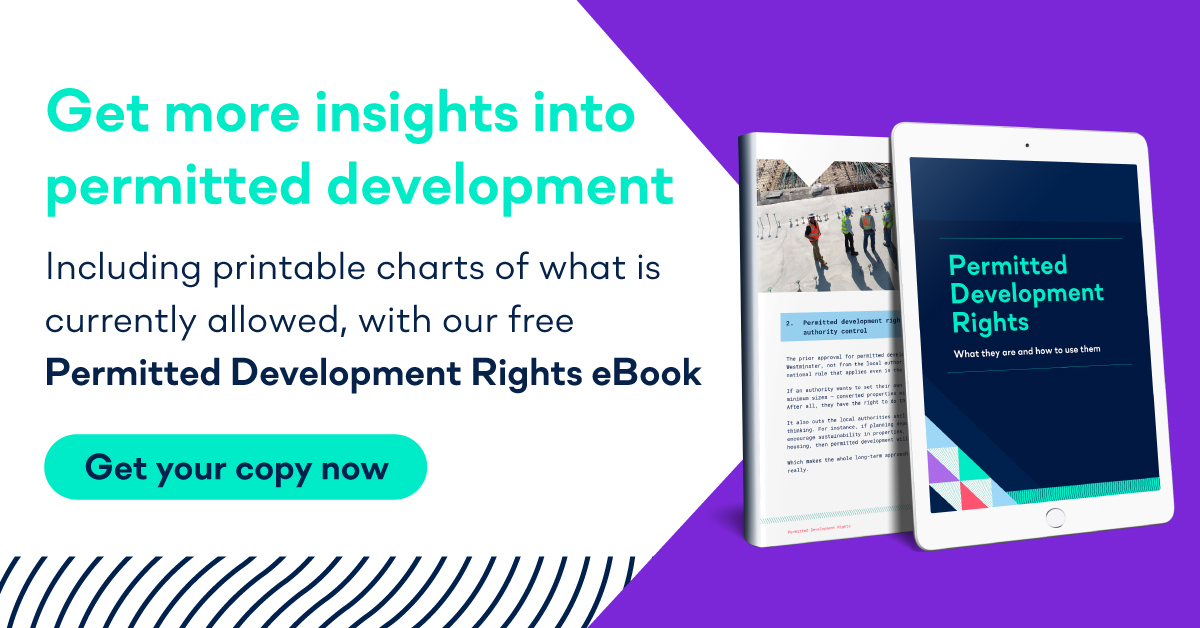On 30th June, the Prime Minister unveiled some changes to planning rules (in what is being referred to as the “Build, build, build” speech). The government described the changes as “the most radical reforms to our planning system since the Second World War”.
There’s a lot in there, so I thought I’d focus on one aspect for now – the expansion of permitted development rights, including:
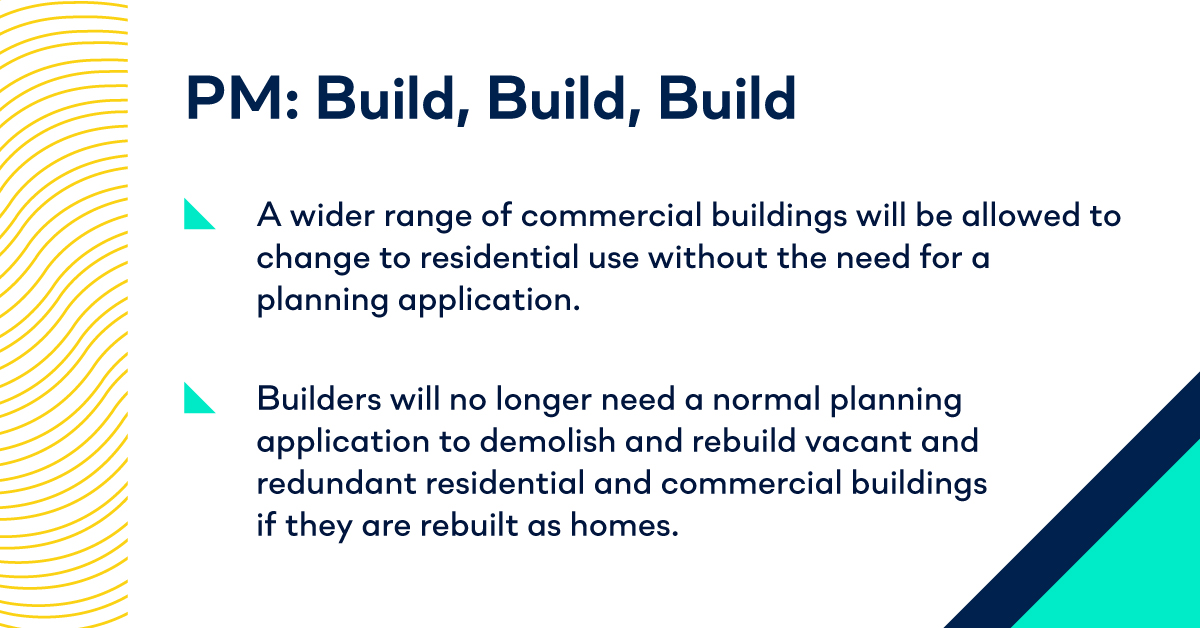
What the permitted development expansion means
As well as a general expansion of the number of use classes covered by permitted development, this change seems to solve one of the fundamental issues – that you were constrained trying to adapt a different use class to residential, rather than being able to start from scratch.
After all, if you’re converting an office or takeaway into residential, it’s probably going to look more like an office or takeaway than you (or your buyers/tenants) might like.
Finally, there’s an option to avoid that.
By being able to demolish and start from scratch, the end result is the same – the building becomes residential – yet the final product can be much more in keeping with normal residential standards.
That should help to get around the ‘modern slums’ reputation that can sometimes plague permitted development.
What do the permitted development changes mean in a post-lockdown world?
It’s safe to say that coronavirus and lockdown have had a big impact on the property market (even if no one can quite agree what exactly that impact is).
Permitted development, especially this expanded version, offers a lot of potential for developers. But there are some big things to think about too.
1) Has there been a noticeable impact on permitted development opportunities already?
It’s perhaps unsurprising that it’s too early to say about a direct impact.
When we put together the Permitted Development Rights eBook, we quoted the numbers of each property types. Here’s that information updated with the June information:
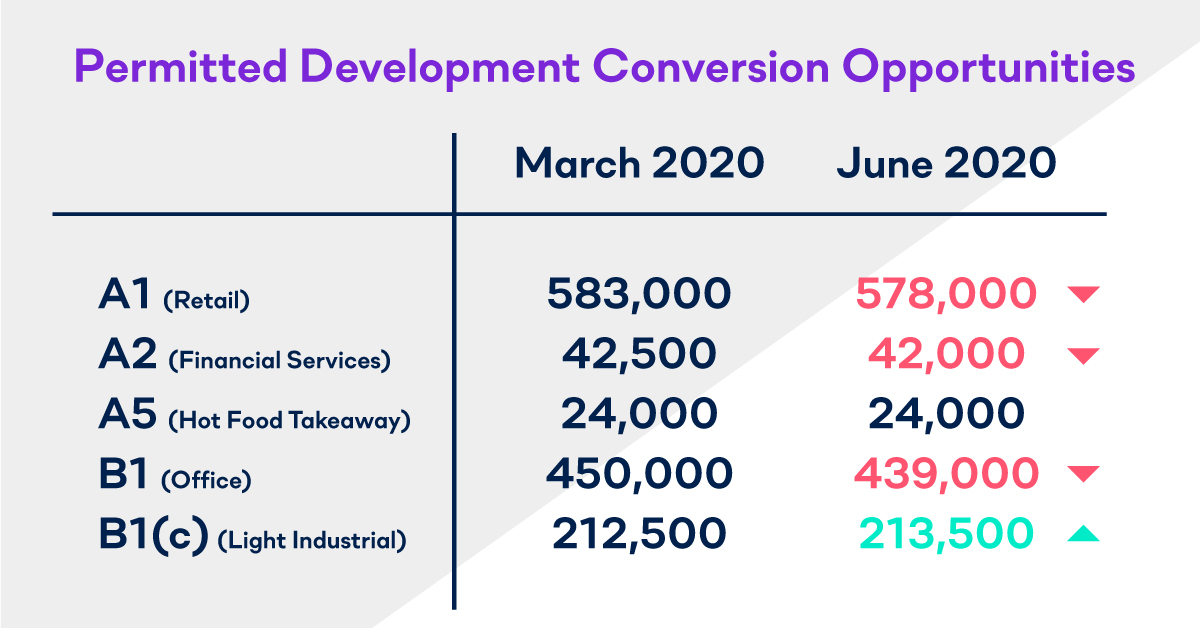
So we can see they trended down slightly, but there’s nothing significant at play, and as for the numbers of unoccupied/vacant/derelict properties – they were almost completely unchanged.
But… we’re potentially at the start of a recession. Businesses are already failing, and that’s with government support like the furlough scheme.
We’re likely to see a lot more properties becoming vacant over the next year or so as the downturn starts to bite. The numbers of vacant properties – eligible for the new rules – are likely to increase.
Smart developers will be keeping their ear to the ground for those opportunities.
2) What will happen to office space long term?
After being on complete lockdown for two months, people (and businesses) realised it’s possible to work from home. Now they’ve experienced it, will people want to go back to the office?
Office space provider Instant Offices estimate that 57.6 million sq ft of commercial office space is sat empty – about 50x more space than the O2 Arena in London.
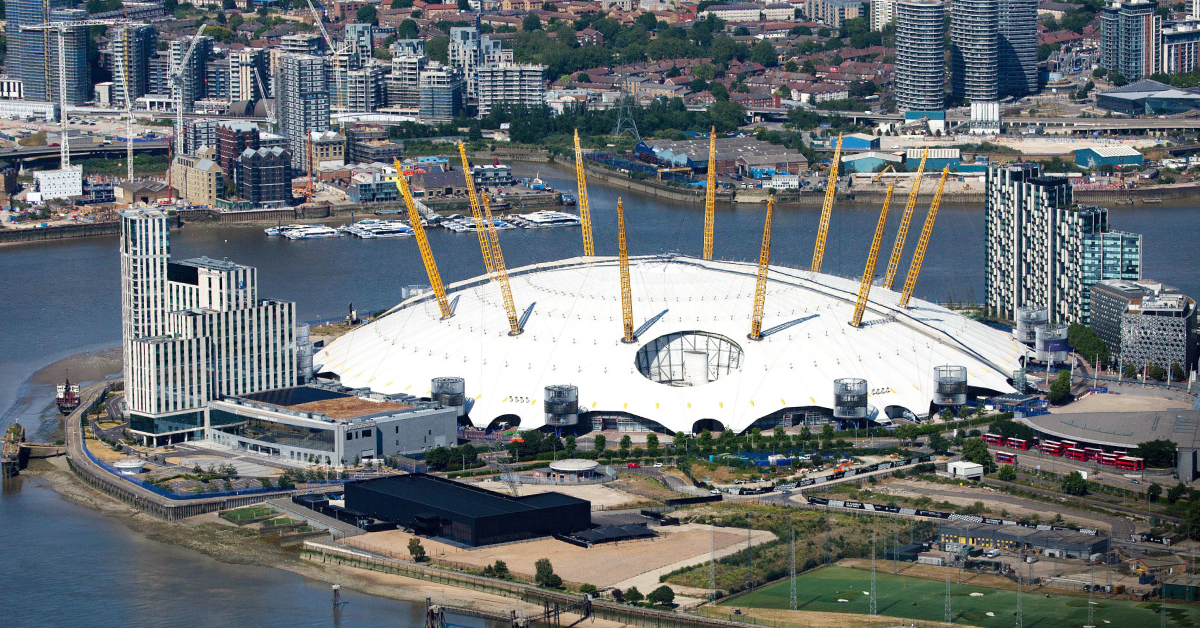
And our own research shows that people expect to work from home more, even in the ‘new normal’.
Fewer businesses may have offices. And those that do may have smaller offices.
Lower demand for space drives down prices, meaning these could be ripe for conversion.
But...
3) Will where people want to live change?
Lockdown meant people were stuck in their four walls. It can make you wonder why you’ve moved to a big city when that never-sleeps atmosphere is turned off overnight.
And of course for a lot of people, moving to the city was a necessary evil of getting a high-paying job (and avoiding a hellish commute). But now we’ve seen that people can work from anywhere, there’s a strong chance they might actually work from anywhere.

Will seaside towns become more popular? Will countryside properties be the must-have investment? Only time will tell.
But considering a lot of those empty offices are going to be right in city centres, is converting them to resi the best play if people no longer want to live in city centres?
4) Will the types of property people want to live in change?
Similar to location, the features we look for in a property could change. For instance, will having your own garden be essential in the post-lockdown world?
And it’s far, far easier to ensure a good garden if you’re demolishing a site and starting from scratch, rather than converting.
Take light industrial, for instance. It used to be a fairly tricky play – on the outskirts of town, less residential areas, industrial-looking buildings (obviously) etc. But now, those negatives don’t matter as much. In fact, as they tend to be outside the main town that just means there’s scope to add more garden area and green spaces.
That could make them a more interesting play than before.

Housing crisis meets recession – which will win?
Two fundamental-yet-opposite truths seem to be at play in the property market today.
One – we’re probably heading towards a recession. Recessions hit income. People put off big purchases. There’s an increase in forced sellers. Property prices fall.
Two – we’re in the middle of a housing crisis. We still aren’t building enough homes to meet demand. The lockdown made people want to move, unleashing even more pent-up demand. Property prices rise.
Which will win? It’s almost impossible to say at this point.
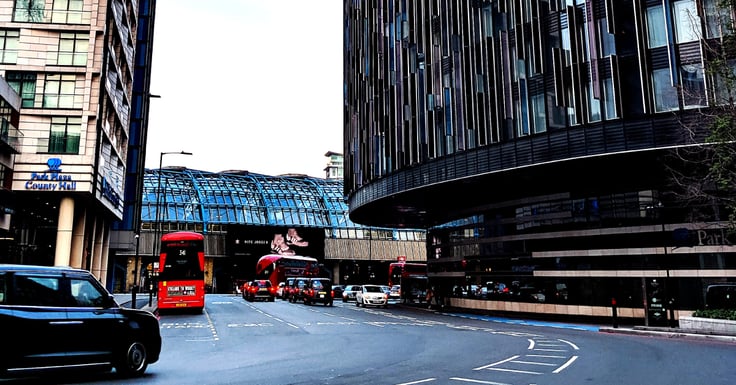
That’s why developers need to look at less risky options for the time being, making permitted development a solid play.
Permitted development lets you cut risk, because:
You can know what’s permitted before you start
Permitted development rules are pretty clear cut. That doesn’t mean you’re guaranteed to get a yes, but you can cut a lot of the guesswork, subjectivity, and on-the-ground politics that can result in the rejection of a full planning application.
You can save money
Each planning application costs money. Factor in planning consultants, time, and admin costs and all the other expenses, and it can add up to some serious money – especially with no guarantee of a ‘yes’ at the end.
You can move faster
No planning application means no laborious approval process. If you’re planning to move fast on deals in any Covid chaos (and make up for lost time spent in lockdown) then permitted development can help you to hit the ground running.
Want to make the most of permitted development rights?
If you want to know more about permitted development, what’s allowed, and how to get started, download our free Permitted Development Rights eBook.

